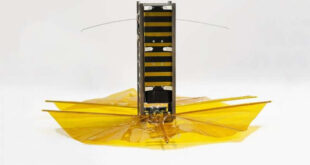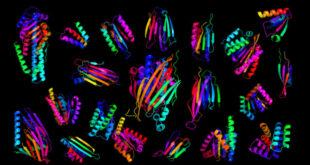Six minutes before brain damage
Cars and truck crashes, house injuries, fires, natural catastrophes. The distinction in between life and death typically depends on the speed and efficiency of emergency care services. The work of medical professionals, paramedics, and nurses being in the first line of the fight against early and meaningless death or paralyzation is exceptionally difficult and inspiring at the very same time. Sometimes there are just seconds delegated conserve a patient’s life. In case of high-risk patients, each minute awaiting treatment Chicago County General Health center’s ER beginning with the 1990s, which the gig guaranteed a standing location for George Clooney amongst the greatest stars. The suggestive power of medical professionals and nurses saving lives also provided an increase to medical documentaries, such as the BBC’s Unknown Stories of the ER with re-enactments of real-life medical stories or the more current version of ER, entitled of emergency situation care is the very same in every country– offering prompt care to victims of abrupt and deadly injuries or emergency situations in order to avoid needless death or long-term morbidity–; Pulsara is a Montana-based U.S. start-up whose app streamlines interaction in emergency care. It permits paramedics to signal an emergency department before arrival with the client. It does so not just by calculating the estimated time of arrival based upon GPS, however users have the ability to attach pictures of the ECG, the injury, the medication list of the client, send the personal data and the parameters of the client, and so on. Informing the stroke team/cardiologists or anyone else who might be associated with the treatment of the patient this way allows the ED employees to prepare better and much faster for the arrival of the seriously ill patient.On its website, the group said they understood when a group of doctors, fed up with the pitfalls of their existing acute care protocols, posed the question at a supper table”How can we improve patient care in our facilities? “I hope in the future, they’ll have more fruitful suppers like this one. Full Code Pro is a free and user friendly app established by the American Heart Association. It makes it simple to record vital interventions, a „ code” throughout vital occasions such as CPR or heart arrest resuscitation. It not only allows the worker to tape-record events (e.g. shock)with only one tap, determines times, counts down according to the protocol however also helps the group by having actually a metronome constructed in to optimize chest compression rhythm. Complete Code Pro makes it simple to administer heart attacks, as well as offers a chance to debrief the case so that the team can discover from the collected data also. Hence, you can fully concentrate on the client without sacrificing correct documentation. A win-win situation!Dr. Ray Bertino, Clinical Teacher of Radiology and Surgery at the University of Illinois College of Medication, dealt with a team of aviation specialists to establish airRx, the world’s only mobile phone app that’s created to assist physicians deal with a few of the most typical in-flight medical emergencies. The app consists of the 23 most typical medical emergency situations that could be experienced during a flight, different flight and cabin crew functions, along with the medico-legal implications for offering to help. It could give a piece of mind for medical professionals taking a trip on board of an airplane as well as travelers fearing that something may take place to them while going from San Francisco to Beijing.2 )Computer game for practice & 911 chatbot for genuine scenarios Air passage EX is a professional video game developed by Level Ex, a Chicago-based start-up applying video game technology to healthcare. The app enables practicing anesthesiologists, CRNAs, and physician to imitate the efficiency of air passage treatments
. It supplies reasonable endotracheal intubation circumstances user interface, which may be a lot faster than making a call. And as your report is sent through the system, it uses options to send extra information and pictures or video footage. As a lot of people are frozen when a lethal or serious accident happens, the app provides advice on how to manage the situation well and how not to trigger a lot more damage to the injured or bystanders.3)Portable ultrasound, ECG & other point-of-care devices The look of pocket-sized, easy to use and portable diagnostic gadgets make it easier and faster to treat a client on the spot. No matter whether its ultrasound, ECG or laboratory screening, leviathan machines are things of the past.While some years ago ultrasound diagnosis was the privilege of radiologists, nowadays emergency situation medical experts have an opportunity to use bedside point-of-care ultrasound gadgets(PoCUS)to answer some yes-or-no questions(e.g. intraabdominal bleeding). Ultrasound machines such as SonoSite’s or Clarius ‘hand-held products allow any doctor to utilize them easily while dealing with a code or a critically ill patient.Yet, we all know it’s not just about the size. Not so long earlier, it was a substantial development that a smart device was able to make a one-lead ECG. However, even if it showed the rhythm, it wasn’t able to replace standard 12-lead ECG. In most cases, if the physician does not see all the 12 leads, a possible cardiac arrest might be quickly misinterpreted. Now, Smart Heart Pro permits users to make a 12-lead ECG with a smartphone
or tablet wirelessly, that is as precise as a similar basic bedside exam.Luckily, the long hours awaiting lab blood test results will also be over soon with hand-held, lightweight point-of-care screening (PoCT) devices, such as the i-STAT screening devices. Abbott’s fast and precise blood analyzer enables physicians to examine the client’s blood sample on the spot and wirelessly transmit the outcomes or the data to coworkers. Invaluable time gain throughout emergency circumstances! 4)Medical drones Drones have fantastic potential in making the transportation of drugs, vaccines or medical aids faster. Therefore, they could considerably support the work of emergency situation services. Google, the tech giant with a considerable medical portfolio, patented a device that can require a drone in emergency situation situations to fly in with life-saving medical equipment on board. You would press a button, and a drone would appear on the spot. How amazing would that sound?And exactly what about drones providing automatic external defibrillators( AEDs) directly to people who have just suffered a heart attack? Researchers from the University of Toronto are already experimenting with the concept based upon their motivation from ambulance drones in the Netherlands. AED-carrying drones have actually likewise been tested in Stockholm with appealing results: it came to the client within a quarter of the time that ambulance took to get here. And drones are not basic carrying makers: they can provide instructions to the bystanders on providing CPR, using the AED and they also enable the dispatch group to give feedback by means of its own video connection. It is estimated that within 1-2 years this lifesaving development can take location in the everyday regimen in Sweden, and hopefully other nations . 5)Driverless ambulances As the advancement of driverless cars continues, the potential for turning automobiles into points-of-care and making use of their unmanned driving capability will become a growing number of obvious. There are currently some federal governments considering driverless ambulances as innovation taking some of the strain off the emergency situation services. These ambulances would work as”medical taxis”. They would choose up low-risk patients and transfer them to the nearest health center or center for treatment. With the introduction of these ambulances, the requirement for paramedics to react to every call– despite intensity– would be greatly decreased . Although it might be less comfy for people to get into a driverless vehicle to the health center at very first. Could you think of sending your better half in labor to the emergency situation system in a driverless ambulance? We’ll most likely need to get utilized to the idea!Concerning “moving ambulances”, in the future, the cars and truck will be a location to measure important signs passively and save the recorded information in clouds. It will either alert the client if there is something wrong or keep a finger on the pulse on the long-lasting. Mercedes-Benz salesman Rob Tinkham described how one of their cars and trucks can currently inform if the chauffeur has become too exhausted to drive. He added

years from now.Their clothing made from wise, light materials would protect them from gunshots or leaks. They may easily turn on the high-visibility mode of their clothes if they go to dark locations or work at night. Sensors and wearables would monitor their own health and fitness while supplying their place. Utilizing self-driving ambulances, very first responders would have the time to get ready for scenarios and get patient data currently en route to the scene.
This could assist bring exactly the best devices to the client in need. It would be easier to access patient data and keep an eye on vital signs through various sensing units, wearables– or digital tattoos. With the assistance of exoskeletons, first responders might lift patients with less effort.The future of emergency situation services looks more streamlined, data-based, efficient and much faster than ever before, while both taking the requirements of the patient and the limitations of caregivers into consideration. So, hopefully, within a number of years, nobody will need to wait for an unnecessarily long time until getting correct care. Yet, understanding exactly what to do in an emergency circumstance or how to do CPR will can be found in helpful anytime, so examine out this video and keep stayin’alive! Register for The Medical Futurist ? Newsletter News shaping the future of health care Guidance on taking charge of your health Evaluations of the latest health innovation
Source
http://medicalfuturist.com/future-emergency-medicine-innovations-making-patients-point-care/
Source
http://medicalfuturist.com/future-emergency-medicine-innovations-making-patients-point-care/
 #Bizwhiznetwork.com Innovation ΛI |Technology News
#Bizwhiznetwork.com Innovation ΛI |Technology News



